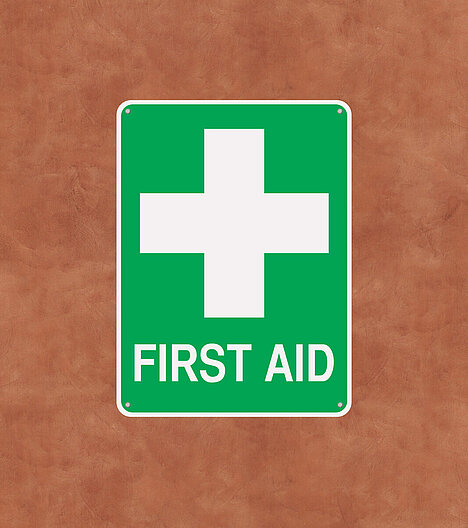Cardiopulmonary resuscitation

You love your dog and want to be able to help him in an emergency. But do you know how to perform cardiopulmonary resuscitation on a dog? In this blog post, you'll find out what to do if your dog goes into cardiac arrest.
What is cardiopulmonary resuscitation?
Cardiopulmonary resuscitation (CPR) is a life-saving measure that you can use if your dog is no longer breathing or has a heartbeat. This involves pressing on your dog's chest with your hands to massage the heart and maintain blood flow. You also breathe into your dog's nose or mouth to give them oxygen.
When does my dog need CPR?
Your dog needs CPR if he is unconscious and shows no signs of life. This means he is not breathing, his heart is not beating and his mucous membranes are pale or blue. Possible causes of cardiac arrest in dogs are
- Poisoning
- drowning
- electric shock
- heat stroke
- trauma
- Heart disease
How do I perform CPR on my dog?
Before you perform CPR on your dog, you should consider the following steps:
- Check that your dog is conscious. Call his name or shake him gently. If he doesn't respond, move on to the next step.
- Check if your dog is breathing. Bend over his head and see if his chest rises and falls. Also feel for a breath with your hand or ear. If you don't detect any breathing, move on to the next step.
- Check to see if your dog has a heartbeat. Place your hand on the left side of his chest, behind his elbow. Feel for a pulse or a thump. You can also use a stethoscope if you have one. If you don't detect a heartbeat, move on to the next step.
- Begin CPR. Lay your dog on a flat and hard surface, preferably on the floor. Position yourself behind his back or next to his head. Alternate between 30 chest compressions and two rescue breaths.
Cardiac massage
The chest compressions depend on the size and shape of your dog. There are two methods: thoracic compression and intercostal compression.
Thoracic compression
Thoracic compression is suitable for large dogs or dogs with a deep chest. Place your hands on top of each other on the widest part of your dog's chest. Press down firmly with both arms so that the chest compresses by about a third. Then release the pressure without lifting your hands. Repeat this 30 times at a steady pace of about 100 to 120 times per minute.
Intercostal compression
Intercostal compression is suitable for small dogs or dogs with a flat chest. Place one hand on the right side of your dog's ribcage, behind the elbow. With the other hand, grasp the left side of the ribcage from below. Press firmly inwards with both hands so that the ribcage compresses by about a third. Then release the pressure without lifting your hands. Repeat this 30 times at a steady pace of around 100 to 120 times per minute.
Breath holding
You can give breaths in two ways: via the nose or via the mouth.
Giving breaths through the nose
Breath donation via the nose is suitable for dogs with a long snout. You keep your dog's mouth closed and enclose its nose with your mouth. Carefully blow air into your dog's nose until its chest rises. Then let the air out again. Repeat this twice.
Giving breath through the mouth
Giving breath by mouth is suitable for dogs with a short muzzle. Open your dog's mouth and pull his tongue forward. Enclose his mouth and nose with your mouth. Gently blow air into your dog's mouth until his chest rises. Then let the air out again. Repeat this twice.
How long should I continue CPR?
You should continue CPR until your dog starts breathing and beating again or until you get professional help. You can keep checking in between to see if your dog is showing signs of life. If you see no improvement after 20 minutes, the chances of your dog surviving are very slim.
What should I do after CPR?
If your dog starts breathing and thrashing again, you should keep him warm and calm him down. Take him to the vet as soon as possible to have him examined. He may need further treatment or monitoring.
How can I prevent cardiac arrest in my dog?
You can reduce your dog's risk of cardiac arrest by following these tips:
- Keep your dog healthy and fit. Feed him high-quality food, give him enough water and exercise.
- Have your dog checked regularly by a vet. Recognize and treat possible illnesses early on.
- Protect your dog from dangers such as toxins, power sources, heat or injuries.
- Learn to recognize the signs of a heart problem in your dog. These include coughing, shortness of breath, weakness, fainting or pale mucous membranes.
- Learn how to perform CPR on your dog. Attend a first aid course for dogs or find out more online.
Performing CPR on a dog can save their life if they are in cardiac arrest. You should know how to perform CPR on your dog and not be afraid to use it if necessary. Remember that you can help your dog, not harm them.
The authors assume that a veterinarian should be consulted if an animal is ill and that medication should only be taken after consultation with a doctor or pharmacist. Only an individual examination can lead to a diagnosis and treatment decision.
We help you find the nearest vet → This way